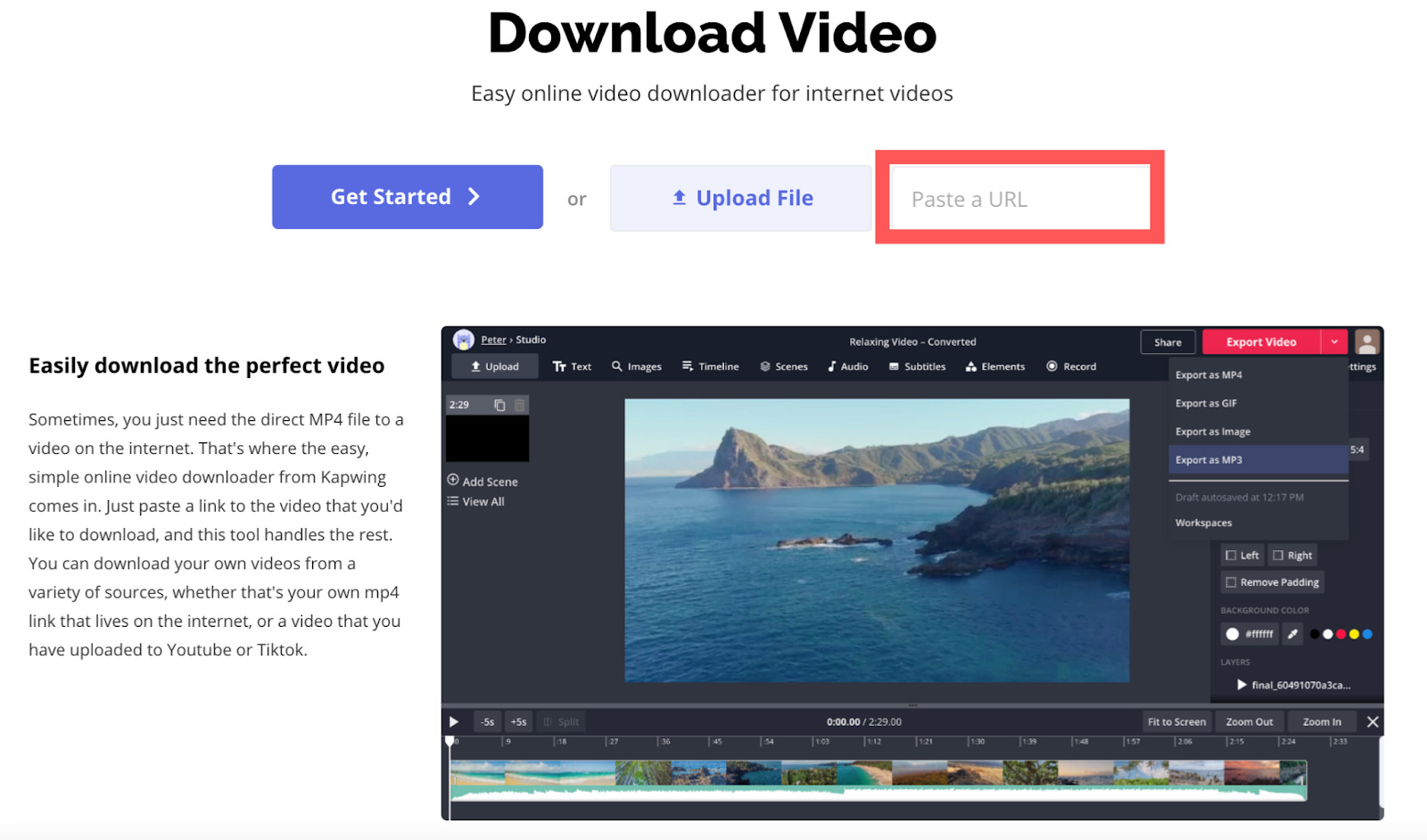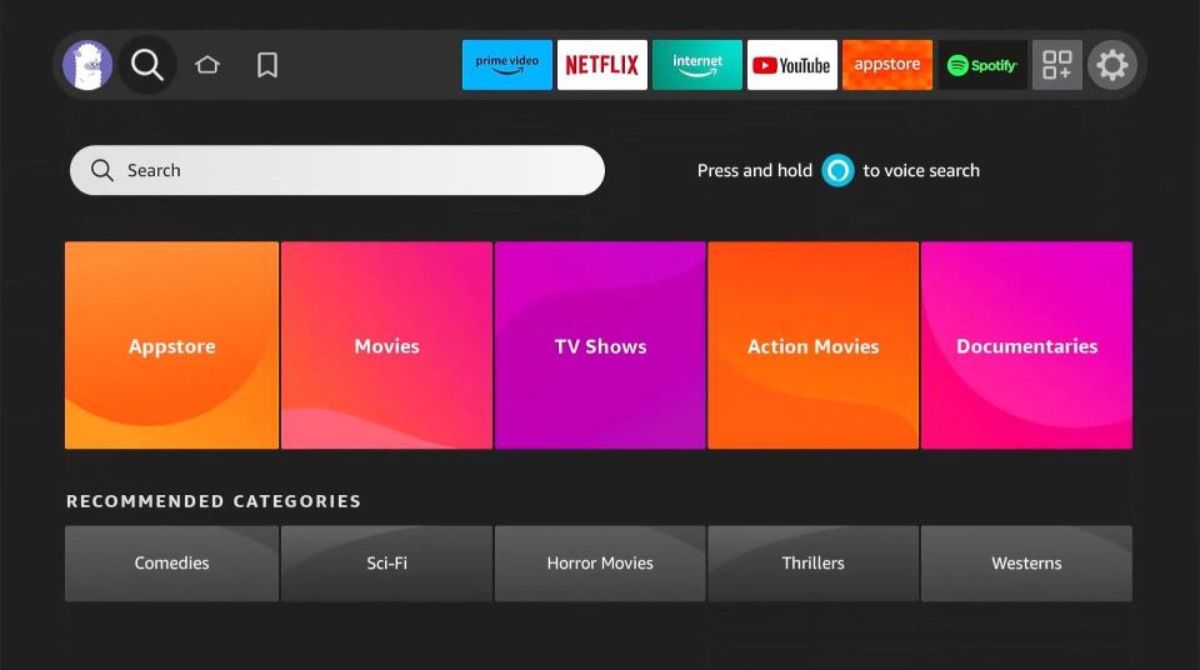Introduction
When it comes to online multimedia streaming, RTMP (Real-Time Messaging Protocol) is a popular choice for delivering audio, video, and other data over the internet. However, there may be instances when you want to download RTMP content for offline viewing or archiving purposes. In this article, we will explore various methods that allow you to download RTMP streams, providing you with the flexibility to access this content at your convenience.
RTMP is commonly used by media platforms, live streaming services, and video sharing websites to transmit their multimedia content in real-time. It offers a reliable and low-latency transmission that ensures smooth playback while minimizing buffering. However, due to copyright restrictions or limited internet connectivity, you may wish to download RTMP streams to enjoy them later or share them with others.
In the following sections, we will discuss three different methods that can be used to download RTMP content. Whether you prefer using dedicated software, browser extensions, or command-line tools, there is an approach suitable for every user’s preferences and technical proficiency.
It’s important to note that downloading RTMP content should only be done for personal use or when you have the necessary rights and permissions to do so. Always respect copyright laws and the terms of service of the platform you are downloading from.
Now let’s delve into the different methods and learn how to download RTMP streams effectively.
What is RTMP?
RTMP, also known as Real-Time Messaging Protocol, is a networking protocol primarily used for streaming audio, video, and other real-time data over the internet. Developed by Adobe Systems, RTMP has become a popular choice among media platforms, video sharing websites, and live streaming services.
RTMP operates on the application layer of the TCP/IP protocol suite, making it versatile and compatible with various platforms and devices. It utilizes three main components: the RTMP server, the RTMP client, and the RTMP protocol.
The RTMP server acts as the source, hosting the multimedia content that is being streamed. It receives the data from the client and distributes it to the viewers or listeners in real-time. The server is responsible for managing the connections and ensuring the smooth delivery of the content.
The RTMP client, typically a media player or a browser, establishes a connection with the RTMP server to receive and display the streamed content. It communicates with the server using the RTMP protocol and can seamlessly handle various multimedia codecs and formats.
RTMP employs a combination of TCP-based connections for reliability and UDP-based connections for low-latency transmission. This allows for efficient streaming with minimal buffering and ensures a smooth playback experience for the end-users.
One of the key advantages of RTMP is its ability to dynamically adjust the streaming quality based on the viewer’s internet connection. It supports adaptive streaming, where the server can switch between different bitrates and resolutions to optimize the playback experience and minimize interruptions caused by fluctuating network conditions.
Furthermore, RTMP offers various features to enhance the streaming experience, such as live chat, interactive elements, and real-time data synchronization. These capabilities make it suitable for applications like live video broadcasting, online gaming, webinars, and video conferencing.
Overall, RTMP has revolutionized the way we consume and deliver multimedia content over the internet. Its low-latency, reliable transmission, and adaptive streaming capabilities make it a preferred choice for streaming platforms and content creators alike. Understanding how RTMP works is essential when it comes to downloading RTMP streams efficiently and effectively, as we will explore in the following sections.
Why would you want to download RTMP?
While streaming platforms and video sharing websites offer convenient access to a vast array of multimedia content, there are several reasons why you might want to download RTMP streams instead of solely relying on online streaming. Here are a few key motivations:
- Offline Viewing: Downloading RTMP content allows you to enjoy your favorite videos, music, or live streams even when you don’t have an internet connection. This is particularly useful when traveling or in areas with limited or unreliable internet access.
- Archiving: By downloading RTMP streams, you can create an offline archive of multimedia content that may be subject to removal or modification on the original platform. This ensures that you have a permanent copy of the content for future reference or historical purposes.
- Quality Control: When you download RTMP content, you have more control over the quality of the playback. Depending on your preferences or specific requirements, you can select the desired resolution, bitrate, or other playback settings to ensure optimal viewing experience.
- Sharing and Repurposing: Downloaded RTMP streams can be easily shared with others, allowing you to distribute the content or incorporate it into your own creative projects. This can be valuable for educational purposes, content creation, or simply sharing enjoyable media with friends and family.
- Convenience and Flexibility: Having downloaded RTMP streams provides the flexibility to watch or listen to content at your convenience, without being constrained by streaming platforms’ schedules or internet connectivity limitations. You can pause, rewind, or skip segments as desired, providing a more personalized and user-friendly experience.
However, it’s important to remember that copyright laws and the terms of service of the platform hosting the content must be respected when downloading RTMP streams. Ensure that you have the necessary rights and permissions to download and use the content legally.
Now that we understand the motivations behind downloading RTMP streams, let’s explore the different methods you can use to accomplish this task. Whether you prefer using dedicated software, browser extensions, or command-line tools, there is a solution to suit your technical expertise and individual requirements.
Method 1: Using an RTMP Downloader Software
One of the most straightforward ways to download RTMP streams is by using dedicated RTMP downloader software. These tools are specifically designed to capture and save streaming content from various platforms, making the process quick and convenient. Here’s how you can use an RTMP downloader software:
- Choose a Reliable RTMP Downloader Software: There are several RTMP downloader software options available, both free and paid. Look for reputable software that has positive user reviews and offers the features you require.
- Install and Launch the Software: Once you’ve selected an RTMP downloader software, download and install it on your computer. Launch the software to get started with the downloading process.
- Copy the RTMP Stream URL: Open the streaming platform on which the content you want to download is hosted. Find the RTMP stream URL for the specific video or audio file you wish to download. This can usually be obtained by inspecting the webpage source code or using browser extensions specifically designed for this purpose.
- Paste the RTMP Stream URL into the Software: In the RTMP downloader software, locate the option to paste the RTMP stream URL. Paste the URL you copied from the streaming platform into the designated field.
- Choose Download Settings: The RTMP downloader software may provide various options to customize your download. You can typically specify the output format, quality, and destination folder for the downloaded file. Adjust these settings according to your preferences.
- Initiate the Download: Once you’ve configured the download settings, click the “Start” or “Download” button to initiate the download process. The software will begin capturing the RTMP stream and save it to your specified location.
- Monitor and Manage Downloads: Depending on the software you are using, you may have the ability to monitor and manage multiple downloads simultaneously. You can pause, resume, or cancel downloads as needed.
Using an RTMP downloader software eliminates the need for manual URL extraction and allows for easy and efficient downloading of RTMP streams. These tools often provide additional features like batch downloading, video conversion, and even the ability to download from multiple sources simultaneously.
Now that you’re familiar with the first method of downloading RTMP streams, let’s move on to exploring another approach: downloading RTMP through a browser extension.
Method 2: Downloading RTMP through a Browser Extension
Another convenient way to download RTMP streams is by using a browser extension specifically designed for this purpose. These extensions integrate directly into your web browser, allowing you to capture and save RTMP content with just a few clicks. Here’s how you can download RTMP through a browser extension:
- Select a Suitable Browser Extension: Look for a browser extension that is compatible with your preferred web browser and supports capturing RTMP streams. Popular browsers like Chrome, Firefox, and Edge have a wide range of extensions available.
- Install the Browser Extension: Visit the extension store or marketplace for your chosen browser and search for the RTMP downloader extension you’ve selected. Install the extension by following the provided instructions.
- Open the Streaming Platform: Navigate to the streaming platform that hosts the RTMP content you want to download using your web browser. Find the specific video or audio file you wish to capture.
- Activate the Extension: Depending on the browser extension you installed, you may need to activate it before capturing the RTMP stream. Look for the extension icon in your browser’s toolbar and click on it to enable the capture functionality.
- Start the Download: Once the extension is activated, play the video or audio file you want to download. The browser extension will detect the RTMP stream and provide an option to download it. Click on the download button or follow the prompts to initiate the download.
- Monitor the Download: The browser extension may provide a download manager or a notification system to monitor the progress of your download. Keep an eye on the download status and ensure that it completes successfully.
Using a browser extension to download RTMP streams offers a user-friendly and seamless experience. It eliminates the need for external software installations and allows you to capture RTMP content directly from the streaming platform without the hassle of copying and pasting URLs.
It’s worth noting that browser extensions may have limitations when it comes to capturing certain types of RTMP content or may not support all streaming platforms. However, they are often updated by developers to ensure compatibility with popular streaming websites and provide a convenient solution for downloading RTMP streams.
Now that you’ve learned about downloading RTMP through a browser extension, let’s explore another method: using command-line tools to download RTMP.
Method 3: Using Command-Line Tools to Download RTMP
If you prefer a more advanced and customizable approach, you can download RTMP streams using command-line tools. Command-line tools provide a flexible and powerful way to capture and save RTMP content. Here’s how you can use command-line tools to download RTMP:
- Choose a Suitable Command-Line Tool: There are several command-line tools available that are specifically designed for capturing RTMP streams. FFMpeg, RTMPDump, and Streamlink are popular options that offer extensive functionality.
- Install the Command-Line Tool: Depending on the operating system you are using, you may need to install the command-line tool by following the provided instructions on their official website or using package managers like Homebrew or Chocolatey.
- Open the Command-Line Interface: Launch the command-line interface or terminal on your computer, depending on your operating system. This is where you will enter the commands to capture and save the RTMP stream.
- Identify the RTMP Stream URL: Open the streaming platform that hosts the RTMP content you want to download and find the specific video or audio file. Inspect the webpage source code or use browser developer tools to locate the RTMP stream URL.
- Enter the Command-Line Tool Command: Using the chosen command-line tool, enter the appropriate command in the command-line interface, including the RTMP stream URL and any additional parameters as required by the tool. These parameters can include the output format, quality, and destination path for the downloaded file.
- Execute the Command: Once you have entered the command, execute it by pressing Enter. The command-line tool will start capturing the RTMP stream and saving it to the specified location on your computer.
- Monitor and Verify the Download: Keep an eye on the command-line interface to monitor the progress of the download. Check for any error messages or warnings that may require attention. Once the download is complete, verify that the file has been saved correctly.
Using command-line tools provides advanced options for customizing the download process and allows for automation or integration with other scripts or workflows. However, it requires a basic understanding of the command-line interface and familiarity with the specific tool being used.
By using command-line tools, you have more control over the download process and can fine-tune the parameters according to your preferences. This method is particularly useful for users who want to incorporate RTMP downloads into scripts, automation, or advanced workflows.
Now that you have learned about the different methods for downloading RTMP, you can choose the approach that best suits your needs and technical expertise. Remember to always make sure you have the necessary rights and permissions to download and use the RTMP content legally.
Additional Tips for Downloading RTMP Successfully
Downloading RTMP streams can sometimes be a complex task due to the various factors involved. To ensure a successful download, here are some additional tips to keep in mind:
- Choose the Right Tool: Select the appropriate method and tool for your specific requirements and technical expertise. Consider factors such as ease of use, compatibility with streaming platforms, and the features offered by the tool.
- Check for Updates: Keep your chosen RTMP downloader software, browser extension, or command-line tool up to date. Developers frequently release updates to improve compatibility, fix bugs, and enhance functionality.
- Inspect Page Source: When using browser extensions or command-line tools, examine the webpage source code or inspect element functionality to locate the RTMP stream URL accurately. This will ensure you’re capturing the correct stream.
- Test and Verify: Before initiating a large-scale download or relying on automated processes, perform a test download to ensure everything is functioning as expected. Verify the quality and integrity of the downloaded file before proceeding.
- Handle Authentication: If the streaming platform requires user authentication or login credentials, ensure that the RTMP downloader tool or extension supports handling authentication. Enter the necessary login information to access the RTMP stream successfully.
- Consider Network Stability: To avoid interruptions or incomplete downloads, ensure a stable internet connection with sufficient bandwidth. Unstable or slow connections can result in download errors or degraded video quality.
- Respect Copyright: Always download RTMP content for personal use or with the necessary rights and permissions. Respect copyright laws and the terms of service of the streaming platform you are downloading from.
- Keep Storage Space in Mind: RTMP streams can be large files, especially for high-resolution videos. Ensure that you have sufficient storage space on your computer or the designated destination drive before initiating the download.
- Backup Downloads: It’s a good practice to create backups of downloaded RTMP streams to prevent data loss. Consider using cloud storage, external hard drives, or other backup solutions to securely store your downloaded content.
By following these tips, you can increase the likelihood of a successful RTMP download experience. Remember to adapt the process based on the specific tool or method you are using and stay informed about any updates or changes in the streaming platform’s technology.
Now that you have a solid understanding of the methods, tips, and considerations for downloading RTMP streams, you can confidently embark on capturing your favorite multimedia content and enjoy it at your convenience.
Conclusion
Downloading RTMP streams provides a convenient way to access and enjoy multimedia content at your own pace, even without an internet connection. In this article, we explored three methods for downloading RTMP streams: using an RTMP downloader software, using browser extensions, and utilizing command-line tools.
The first method, using an RTMP downloader software, offers a user-friendly approach with dedicated tools specifically designed for capturing and saving RTMP content. These software solutions usually provide customizable download settings and additional features like batch downloading, video conversion, and multi-source support.
The second method, downloading RTMP through browser extensions, is a seamless and convenient option for capturing RTMP streams directly from streaming platforms. These extensions integrate into your web browser, allowing you to download content with just a few clicks. However, it’s essential to choose a reliable extension that supports the streaming platform you are using.
The third method, using command-line tools, provides advanced customization and automation options. Command-line tools like FFMpeg, RTMPDump, and Streamlink offer powerful capabilities to capture and save RTMP streams. This method is suitable for users who are comfortable with the command-line interface and want more control over the download process.
Regardless of the method you choose, it’s important to follow additional tips for a successful RTMP download. These tips include selecting the right tool, inspecting page source for accurate URLs, testing and verifying downloads, handling authentication if required, considering network stability, respecting copyright laws, and keeping adequate storage space for downloaded files.
Remember to always download RTMP content for personal use or with the necessary rights and permissions. Piracy and copyright infringement are illegal and should be avoided. Be mindful of the terms of service of the streaming platform you are downloading from and respect the creators’ rights.
With the knowledge and understanding gained from this article, you are now equipped to confidently download RTMP streams and enjoy multimedia content at your convenience. Whether you prefer dedicated software, browser extensions, or command-line tools, you have a range of options to suit your preferences and technical expertise.
Happy downloading!

























